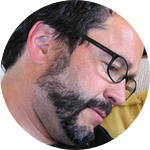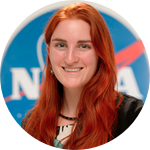About This Project
Microbial fuel cells are a new technology with the dual function of treating wastewater and producing electricity. Microbes in soil constantly oxidize organic matter and make electricity that we can harvest.
By including a plant and symbiotic soil microbes, we will create a plant-microbial fuel cell (PMFC) that performs better than standard microbial fuel cells. Our design uses wetlands soil as well as new materials and processes that will improve efficiency.
Ask the Scientists
Join The DiscussionWhat is the context of this research?
A microbial fuel cell (MFC) contains bacteria that clean water and generate electricity. This technology is of interest to farms, breweries, and fisheries to harness power from waste water runoff, which would require expensive treatments before release. Advancements within the last 5 years produce higher energy outputs while remaining environmentally friendly, compared to older cells which used toxic electrodes and produce too little power. PMFCs use strong symbiotic relationships between plant and soil bacteria to increase the strength of the culture, which produces electricity from the sugars provided by the plant in return for important growth nutrients, such as nitrogen and phosphorus. The process is low temperature and low pressure, since it uses the conditions of standard ecosystems.
What is the significance of this project?
Both MFCs and PMFCs are established technologies, but we are the first to suggest the use of symbiotic plant-microbial relationships to create self-containing ecosystems, to provide wastewater treatment and power. In addition, improved-electrode research is scattered and our research will be a comprehensive study to advance all MFCs by bringing higher power output in the fuel cell itself. We will use drought-resistant plants that can be grown globally and soil, as opposed to hydroponics, to conserve energy and resources. The research will serve as a stepping stone for improving the living components of the PMFC. This includes optimizing symbiotic relationships between plant and microbe and the proper combination of these components for improved nutrient exchange and wastewater treatment.
What are the goals of the project?
We will collect soil, plant, and microbial samples to be the living components of the PMFC. When the non-living components of the microbial fuel cell are constructed we will confirm that it can pass a voltage. Then we will begin trials with different electrode materials to compare the effect on power output. The best current commercialized power output for general MFCs (including PMFCs) is 40 watts, and we aim to beat this. This research will be the stepping stone to our long term goals of creating more efficient PMFCs with improved soil and microbial combinations. A continuing goal of this project is creating research opportunities for community college students and provide a wide variety of university students with practical scientific experience.
Budget
The housing of our fuel cells will be made from sheets of recyclable low-density polyethylene. A sheet of Nafion will be used to separate the anode and cathode sites to complete the fuel cell. Different electrodes produce varying power densities depending on their surface area. Higher surface areas are more prone to biofouling, or clogging of the electrode due to over-accumulation of bacteria. The rate of biofouling will be monitored to create a realistic idea of their use in a marketable product in the future. The goal is to build an easy-to-clean system that is highly productive.
In order to collect samples of sedimentary mud, we will need to rent a boat to go out in the San Francisco Bay. All samples of mud collected will be used to start building our first MFC! Additionally we need to buy pumps to provide a constant flow of water to our cells, as well as circuits and batteries to direct any power our cells output. Any extra funds will be spent on more nafion.
Endorsed by
Meet the Team
Affiliates
Affiliates
Team Bio
We are a part of NuLEAF, a student-lead engineering research organization based out of Los Altos, CA with team members and mentors contributing from several universities and corporations in Silicon Valley.
Our project is in connection with Foothill College, the Advanced Studies Laboratories (ASL), a partnership group with NASA Ames Research Center, the Scientific Learning Institute, and the Northern California Chapter of the American Vacuum Society (NCCAVS).
Ari Ochoa
I've been a part of NuLEAF since it's inception and I wouldn't trade it for the world. The best part about working with a diverse network of interdisciplinary professionals is combining our collective knowledge to achieve a common goal. It's really great when people working together can create something larger than the sum of its parts.
Mitchell Williams
Senior Chemical Engineering student at San Jose State University with a focus in energy with plans to get PhD after graduation. When not in class, I am playing hockey or exploring with friends. I am a team player, adventurous and an outside the box thinker. Strong in fields of math, physics and chemistry with interests in biomimetics and quantum mechanics.
Julie Kring
I am a biochemistry student and a mountaineer at heart. My three favorite things are Led Zeppelin, oversized dogs, and microorganisms. Someday I might own a carbon neutral Bison ranch.
Rachel Major
I have studied ecology, biochemistry, engineering, and management. My diverse education and work experience gives me a interdisciplinary and creative engineering perspective.
My greatest passion is biomimicry, bioinspired design, and learning from nature to create a more sustainable future. Through biomimetics, I hope to help bring biotech outside of conventional sciences to solve some of the world's most pressing problems related to climate change.
NuLeaf Tech began as a NASA Ames internship, quickly evolved into an independent educational research organization, and is now a bioinspired start up. We foster resource independence and sustainable lifestyles through biomimetic engineering. We design naturally integrated water and energy solutions that reclaim resources on site.
Project Backers
- 43Backers
- 222%Funded
- $2,026Total Donations
- $47.12Average Donation





